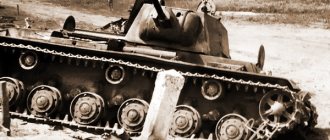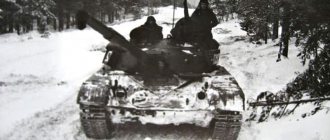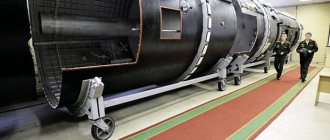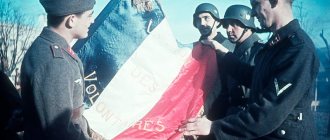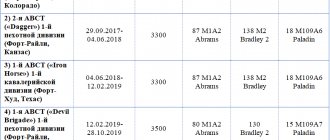The Second World War, and for the Russian people the Patriotic War, left its mark on the history of all the states that participated in it. To this day, these events amaze with their cruelty and the greatness of the feat of many millions of people. The interest in historical facts among contemporaries is very great, this can be judged by constant new publications, many of which, purposefully or not, distort the original meaning of documentary sources. Therefore, the need to discuss the last world war is a topical and controversial topic.
Introduction
Among the most selfless adherents of Nazism, distinguished by bestial cruelty and lack of military valor, are SS units. At the beginning of operations on the eastern front, the advance of these divisions meant inevitable death for everyone who stood in their way. Throughout the war, this reputation of the troops of this branch was skillfully maintained. The SS Division “Totenkopf” became famous for the greatest atrocities in reprisals against civilians and prisoners of war. It should be noted that for the majority of Russian soldiers, these elite units did not evoke horror, but disgust. According to the recollections of our soldiers, the SS men were shot “like mad dogs,” and they were treated the same way. But everyone recognizes the fact that, as a military unit, the Death's Head division acted effectively in attack and consistently in defense. To understand the motivation of these “warriors”, it is necessary to turn to the history of the emergence of this connection.
Himmler
A key role in the formation of the SS divisions that directly participated in the hostilities was played by one of the main political figures in Germany during the Nazi period - Reichsführer SS G. Himmler. The figure is well-known, his biographical data is standard for the military of that time. Of greatest interest is his belief in various mystical rituals, runes, and the process of reincarnation, therefore, when creating the SS “black order,” he intensively introduced medieval rituals of knights, which partially took root.
At the initial stage, the Reichsführer planned to create these units as a “party army.” The SS divisions were to include only racially pure Germans who were fanatically loyal to the National Socialist Party. The functions of the SS troops were initially defined as intra-German security, but training was carried out at the level of functional combat units. Himmler consciously created his own army, which, in his opinion, should have been radically different from the Wehrmacht units and embody a new type of troops. Contradictions between career military personnel, officers of the highest leadership echelon and the ideas of the Reichsführer SS led to the fact that the formation of divisions was carried out in parallel with the main conscription. The SS Division "Totenkopf" was created from the only source of human reserves available to Himmler - the guards of German concentration camps. In this, he received enormous help and assistance from Theodor Eicke, whose personality cannot be unequivocally assessed. However, his absolute devotion to Hitler and Himmler needs no comment.
Fakes
The elitism and mystical aura of the ring aroused and continues to arouse interest. In the Third Reich, the Death's Head ring was considered the most prestigious award (although, strictly speaking, it was not a state award, like an order or a personalized weapon, but was considered a gift from Himmler).
The first fakes appeared during the Second World War - they were ordered, as a rule, by SS officers who, due to circumstances, were not awarded a genuine ring. Since jewelers were prohibited from making copies of the ring for sale, they were made illegally, including by concentration camp prisoners. After the war, there were even more copies of the ring, especially those made in Poland. In general, all copies can be divided into several categories:
- Low quality copies, the difference from the original is visible to the naked eye. The skull may be soldered incorrectly or crookedly, the font clearly does not match, etc.
- Fantasies on the theme of the ring. Although they are not, in fact, copies, they are often passed off or mistaken for the original. In such rings the shape of the skull and the cut of the leaves are greatly changed.
- Copies of average quality. For such rings, the casting of the skull may not correspond to the date stamped, there may be minor differences in the cut of the oak leaves framing the ring, etc.
- High quality copies. Made with respect to all small details, difficult to distinguish from the original. A counterfeit can only be detected through a request to the SS archive, and/or through a structural analysis of the metal, showing the real age of the ring.
It is quite difficult to identify the original. Since there are very few real rings, each confirmed original causes a stir among collectors of military antiques, and sells quite quickly. The full examination of the ring is quite lengthy, and includes an accurate check to ensure that the size of the ring and the shape of the skull correspond to confirmed originals of the same period as the date on the ring, a request from the SS archives to verify the authenticity of the award, as well as a structural analysis of the metal for age. However, 80% of fakes are copies of fairly low quality, and they are quite easy to check. Some of the most common signs of counterfeits:
- Surname Muller, Lohmann, Deininger, Weber on the inscription. As a rule, it indicates the “Polish” origin of the fake.
- The ring is made of gold or gilded. The original rings were made only from silver.
- The frontal part of the skull on the front side protrudes strongly above the edge of the ring.
- The absence of an even vertical strip on the inside of the ring—the technological seam—right behind the skull. Such a seam was always present on the originals, which was a consequence of the production technology.
- The presence on the inside of the ring, in addition to the inscription, of some other symbols, for example, the SS emblem.
In addition, there are free-form SS rings with the Death's Head casting. Such things were very popular among SS officers, but these were not awards, but personal items made to order, not connected in any way with the ring. However, when sold, most often they are also called “Death’s Head”.
Creation of a division
The Dachau concentration camp was located near Munich. It was on its basis that the future Death's Head division was created. In 1934, Eicke, by appointment of Himmler, became SS Brigadeführer and took charge of a rather neglected camp economy, mired in corruption and terror. Using harsh methods, he restores order in the Dachau camp in a very short time, so by 1935 he became an inspector of the entire penal system in the territory of the Third Reich.
The history of the SS division "Totenkopf" (Totenkopf) begins in 1939; initially this unit had only security functions. The name itself comes from the badge that soldiers wore on the buttonholes of their uniforms. In addition to the double Sieg rune, concentration camp guards used a skull and crossbones as an emblem. Historically, this sign did not have a terrifying function; it implied contempt for death and complete self-sacrifice. Eicke was an excellent implementer of all Himmler's innovations, so the choice was made taking into account his mystical inclinations. The emblem of the SS division “Totenkopf” adorned the buttonholes of all camp guards until the end of the war and was present on the uniforms of SS units. Dachau was chosen to create a new type of troops, and they were trained on its territory. The selection was carried out on very strict principles, and Eicke carried it out personally. The height of the future soldier of the Third Reich must be from 178 cm, excellent health and age from 17-18 to 22 years were also required. At the same time, more attention was paid to racial origin and political views. Intellectual abilities were not assessed.
According to Eicke, a soldier should not think; he must carry out an order without analyzing its adequacy. The preparation was based on long, hard physical training and political preparation based on hatred of the enemy. Cruelty was cultivated by the founder himself, Eicke. The SS Division “Totenkopf” was created in conditions of strict discipline and complete subordination to the leadership; everyone dissatisfied with the method ended up in a concentration camp as prisoners. To better understand the foundations of the creation of this unit, it is necessary to refer to some facts from Eicke’s life and his psychological portrait. His fanatical devotion to Hitler and Himmler crossed all boundaries of reason.
Design
Runes on the ring
The rings were made of silver. The runes on the ring reflect Himmler's interest in mythology and the occult:
- (Hakenkreuz) is one of the oldest ideographic symbols, symbolizing the infinity of existence and the cyclical nature of rebirth. The name comes from a two-syllable Sanskrit word meaning “well-being.” It is a regular equilateral cross with ends “broken” at right angles in the middle of their length; divided into “light”, left-sided, and “dark”, right-sided. In both versions, it was first used in Germany on the eve of the First World War as an emblem of the “racial purity of the Aryan nation.” After 1918, it was depicted on regimental and divisional standards of the Freikorps, for example. In August 1920, Hitler used the right-hand swastika to design the party banner and subsequently compared his insight to the effect of a “bomb exploding.” The swastika became a symbol of the NSDAP and the Third Reich. This symbol was used quite often by both the SS Troops and the SS Apparatus, including the German SS, for example, the SS formations in Flanders ( Allgemeene-SS Vlaanderen
). Currently, in most countries its use is limited or completely prohibited. - The rune “
Siegrune” is an attribute of the god of war Thor. A sign of power, energy, struggle and death. In 1933, SS-Hauptsturmführer Walter Heck, a graphic artist in the workshop of Ferdinand Hofstatter in Bonn, while developing the layout of a new badge, combined two “Sieg” runes. The expressive lightning-like shape impressed Himmler, who chose the “double lightning bolt” as the emblem of the SS. For the opportunity to use the mark, the SS Budget and Finance Department paid the copyright holder a fee of 2.5 Reichsmarks. In addition, Heck designed the CA emblem, combining the runic “S” and the Gothic “A”. - Rune "Heilszeichen"
lit. “sign of salvation”) is a symbol of success and good luck, an author’s element on the theme of runic ornamentation. - Hagallrune
rune symbolized the unbending faith (in the Nazi sense of the word) required of every member of the SS. This rune was widely used during various SS ceremonies, in particular at weddings.
S Lb was engraved on the inside of the ring.
- “Seinem Lieben” (from German - “to his favorite”), owner’s name (initials), surname (in full), facsimile of Himmler’s signature and date of delivery. Along with the ring, a special round box for storing it, decorated with SS runes, was also given.
Theodor Eicke
The career rise of the future commander of the SS unit occurred suddenly; it was associated with the victory of the Nazis in Germany and the beginning of Hitler’s reign. Participation in the world (first) war did not give Eike either high ranks or great power. His bestial instincts, generously seasoned with psychopathy, suited the Nazis, so Himmler made him a punitive instrument against his own enemies. Theodor Eicke, according to contemporaries, was distinguished by cruelty and harshness, especially in his attitude towards Jews, communists and anyone who did not meet the definition of “true Aryan”. These qualities were very useful to him when working in concentration camps, where strict discipline and intolerance for violations of the rules were introduced not only by prisoners, but also by guards. His efforts were appreciated, and another promotion in rank coincided with a new position. Having created a trouble-free system of camps, Eicke gets the opportunity to realize Himmler’s dream of a “new army”, the embodiment of which is the SS division “Totenkopf”. His level of education was quite low, and he had no command skills. He was a simple soldier who built relationships with his subordinates on their complete submission to any orders. Soldiers devoted to him called Eicke “Papa” and tried to live up to his ideas about the ideal warrior of the Third Reich. Due to illiterate command, the future SS Panzer Division “Totenkopf” suffered heavy losses in equipment and people, but at the same time, the resilience Eicke instilled in the soldiers allowed them to adequately withstand the load and fight in areas that all other units had abandoned.
Biography Edit
General Wilhelm Strasse, born in 1860, is still active in his old age. He is well known to everyone by his nicknames; Nazi soldiers prefer to call him Totenkopf, while his opponents are more inclined to call him the Skull or Death's Head.
A gifted and dedicated general to explore, he is the head of the SS Special Projects Division and is also a member of the SS Paranormal Division, although he is not very good with magic. Completely devoid of any moral scruples, the general conducts his experiments in new technologies that give the Nazis everything they need to win the war and make the whole world fall. The general is vain and considers himself better than others, he considers the Germans members of a superior race, while others, mainly Jews, English- and Russian-speaking people, are parasites and errors of nature. His sadism and knowledge allow him to happily conduct experiments on living beings and create monsters; his various biorobots are considered the most famous.
It seems that fortune looks upon the general with a smile, as he has looked death in the face many times, most notably during the Second World War, when he was on board a falling airship, and miraculously survived the crash while on the verge of death. This closeness to death gave him a fresh outlook on life, and now he enjoys every minute of it.
Symbolism
The German Death's Head division, like all SS units under Himmler's leadership, was created in a very rigid ideological space. Unity of spirit, views, interests, common enemies and friends, a single goal and disregard for the means during its achievement - the elite units of the Nazis were created on these principles. The emblem of the SS division “Totenkopf” was supposed to terrify enemies and inspire respect among friends. This sign partially coped with the task. Using this emblem, SS men were very easily identified. And, as a rule, they were shot immediately; Russian troops rarely captured outright, fanatical murderers. The ring of the “Death’s Head” division has practically not survived to this day. It was awarded to the most distinguished officers and soldiers. The ring bore Himmler's signature; before the soldier's name there was always the address "my dear." Its design was overloaded with runic symbols, the center of the composition being a skull and crossbones. After the death of the owner of the ring, it had to be returned to the Reichsführer SS, who kept all copies as a memory of his fallen comrades. By order of Himmler, the entire collection was destroyed, it was buried under a provoked rock collapse.
Rings after the death of the owner or leaving the SS
Wewelsburg Castle
In the event of the death of the owner or his departure from the SS, the ring was supposed to be handed over to Himmler to return it to Wewelsburg Castle as a memory of the owner. If the owner of the ring died in battle, his comrades had to make every effort to return the ring and prevent it from falling into the hands of enemies. The rings of murdered SS officers were used in the display of the Schrein des Inhabers des Totenkopfringes (Tomb of the Owners of the Death's Head Ring) memorial at Wewelsburg Castle. By January 1945, 64% of the 14,500 rings had been returned to Himmler. In the spring of 1945, all the rings stored in Wewelsburg, on Himmler's instructions, were buried under an artificially caused avalanche. They have not been found yet.
Anthem of the SS Division "Totenkopf"
Fanatical devotion to Hitler and his immediate commander was often based on correct Nazi propaganda and indoctrination. The heads of most young people who were not literally adherents of Hitler’s racial theory were filled with propaganda; the maximum amount of information contained emblems and hymns of dedication to the Fuhrer. For example, the march of the SS division “Totenkopf” does not contain any patriotic information, it is a song about how we live together, we will die together and we will drink together, if we are lucky. This “masterpiece” serves only the purpose of uniting the troops and nurturing fraternal relations within the unit.
Western direction
The future German tank division “Totenkopf” began its march across Europe from Poland. Eicke's troops were supposed to cross the border after the passage of the regular Wehrmacht army; they were assigned the role of police in the occupied territory. The Death's Head soldiers did not take part in hostilities; there were several skirmishes with units emerging from encirclement, but mostly the unit fought with civilians. At the same time, their cleansing activities were rated very highly by Himmler.
To create a full-fledged unit of the SS army, the command decided to train the officers and Eicke himself in the basics of strategy and tactics of combat, but the result was negative. Therefore, in May 1940, the “Totenkopf” division approached the Franco-German border, still as part of the administrative corps, but this time with the possibility of participating in hostilities. During the invasion, due to lack of supplies, SS units engaged in outright robbery of the population. Eicke's soldiers distinguished themselves in many battles in France, but their losses were very high. This was a consequence of the illiterate leadership of the officer corps. Subsequently, Himmler “reprimanded” the not very educated, but most devoted commander, and then left the division in Bordeaux for reorganization.
Eastern Campaign
In April 1940, the massive transfer of troops of Nazi Germany to the borders of the Soviet Union began. Himmler set about reforming all SS standards. This also affected the “Totenkopf” division: it was equipped with additional infantry companies. The first clash with Soviet troops took place on July 6, 1941. According to Manstein, with whose troops the division began the offensive movement, the Death's Head soldiers had a very high level of discipline and attacked harshly and effectively in battle. But inept command reduced all the positive aspects to zero, as a result, all victories were achieved with great blood. By the winter of 1941, losses amounted to more than 50% of the initial strength of the unit. The Soviet army began to attack German troops in the northern direction of the front, the defense took several hundred soldiers every day, Eicke had no reserves, those remaining in the ranks were too exhausted morally and physically. Nevertheless, clear discipline made the division a combat-ready unit even without a commander, who was sent to the rear with a wound.
Award text
| I reward you with the SS Death's Head Ring. This ring symbolizes loyalty to the Fuhrer, our unyielding obedience and our brotherhood and friendship. The Death's Head reminds us that we must always be ready to give our lives for the good of the German people. The runes opposite the death's head symbolize our glorious past, which will be restored through National Socialism. The two zig runes symbolize the abbreviation SS. The swastika and hagall rune signify our unbending faith in the inevitable victory of our philosophy. The ring encloses an oak wreath, oak is a traditional German tree. The Death's Head Ring cannot be bought or sold. This ring should never fall into the hands of anyone who has no right to hold it. If you leave the ranks of the SS or die, the ring must return to the Reichsführer SS. Illegal acquisition or copying of a ring is strictly prohibited and is punishable by law. Wear this ring with honor! G. Himmler |
Demyansk boiler
At the beginning of January 1942, 4 Soviet armies simultaneously attacked the 16th German division with the aim of encircling it and subsequently destroying it. The commander of the German Army Group North, Leeb (Field Marshal General), reported to Hitler about the situation at the front and the possibility of losing selected Wehrmacht units. But there was no order to retreat, which helped the Russian troops, albeit with heavy losses, complete the maneuver and close the encirclement in the Demyansk area. In fact, since February 10, the German army fought in a cauldron. Leeb resigned and was replaced by the former commander of the 18th Army, Küchler. The SS division “Totenkopf” found itself in the Demyansk cauldron together with its commander Theodor Eicke, where it began a long defense. According to various sources, approximately 100 thousand German soldiers were surrounded and continued to desperately resist.
So, the vanguard formation that was sent to break through the encirclement in March 1942 was the SS division “Totenkopf”. The story of the third SS Panzer Division could actually end in the Demyansk cauldron. After all, when the Ramushevsky corridor was created and the remnants of the army were removed from the encirclement, less than 30% of the soldiers remained from Eicke’s units. Until October 1942, the division held positions on the Demyansk ledge; as a result, its remnants were sent to France for rest and replenishment.
Formation and combat path
The division began formation on November 20, 1940 and had the original name - motorized SS division "Germany" - after the name of the "Germany" regiment transferred from the 2nd SS division (SS reinforcement division, future "Reich" division). Since January 1941 - SS volunteer motorized division "Wiking". In April 1941, two new units were formed in the division: the Westland regiment, made up of Dutch and Flemings, and the Nordland regiment, made up of Scandinavians.
From 1941 to 1943, the division included the Finnish Nordost battalion. In the summer of 1943, the Estonian Narva battalion, transferred to the 20th Division in July 1944, was included in the division.
Foreign volunteers from what was called in Nazi jargon “racially acceptable peoples” (Flemings, Dutch, Walloons, Danes, Norwegians, Swedes, Estonians and Finns) fought in the Viking division. However, foreigners made up only about 10% of the division's personnel (1,000 out of 11,000). The Viking was the first SS division to include foreigners.
For some time, Josef Mengele served as a doctor in the division's engineer battalion. In the USSR it operated on the southern sector of the front: Ternopil, Zhitomir, Cherkassy, Stalino, the Don River.
During the attack on Rostov, the Viking division covered the flank of the 1st Tank Army, providing defense in an area of about 60 km.
During the counter-offensive of the Soviet troops, it held back the advance of the 37th Soviet Army and successfully retreated to the line of the Mius River.
From the end of 1941 until the spring of 1942, it fought defensive battles along the Don and Mius rivers. From July to November 1942 she fought in the Caucasus, and at the beginning of 1943 she returned to Rostov. From March to September 1943, she fought defensive battles in Ukraine and took part in the battles for Kharkov. In October 1943, it was reorganized into a motorized SS division. Finding itself surrounded near Cherkassy, the division lost half its personnel. After completion, she fought in Poland, and at the end of 1944 she was sent to Hungary, where she took part in the attack on Budapest. By May 1945, the division was concentrated in Austria, northeast of Graz. On May 8, the division commander ordered a move to the northwest to reach the American occupation zone. On May 13, the division entered territory occupied by the Americans.
June 21, 1942. CC Sturmbannführer August Diekmann presents the Iron Crosses to soldiers for their military merits.
From September to November 1944, battalion-sized Western Ukrainians served in the SS Viking division; in total, at least 1,000 people were sent. At the Modlin training camp, Western Ukrainians, together with Dutch and Baltic volunteers, completed a training course and became part of the battalions of the Viking division: mainly in the German and Westland regiments. In November 1944, about 500 survivors joined the ranks of the Galicia division, which was just being reorganized after the battles near Brody.
During the existence of the division, 55 of its personnel were awarded the Knight's Cross (the third result in the SS troops after the Leibstandarte and Das Reich).
Reformation
The SS Panzer Division “Totenkopf” appears during this period. By order of Hitler, the unit is formed as a tank-grenadier unit. In southern France, Eicke's soldiers participate in Operation Attila, after which the division is transferred to Angoulême. Its expanded composition and rested soldiers enable the commander to begin new grueling training that turns the unit into a formidable weapon of Nazism. The rest was short as the situation on the eastern front became threatening; at the beginning of February 1943 the division was transferred to Ukraine and became part of the Army South.
Death of Eike
Fierce fighting for Kharkov led to heavy losses on both sides. Eicke tried to show strategic initiative as a division commander, for this he had to know exactly the location of his troops. On February 26, 1943, he boarded his single-engine reconnaissance aircraft for the last time, which was shot down by Soviet troops with rifles. Eike's body was recaptured and buried in the city of Orelki. When the German troops retreated, the ashes were exhumed and reburied in Zhitomir. At the end of December 43, the city was completely liberated by Soviet troops, and Eike’s burial site was razed to the ground. At the time of the withdrawal of German troops from Zhitomir, all SS units were in another place, so they were never able to remove the commander’s body.
Budapest
After Ukraine, the movement of German troops turned into a constant retreat; sometimes they managed to gain a foothold in some positions and hold the line, but the Soviet army could no longer be stopped. The allied army was deployed on the western borders. The defense of individual cities made it possible to counterattack by regrouping forces, but the German troops were unable to go on the offensive. During the advancement, many SS standards were mixed and supplemented at the expense of each other. The constant need for replenishment could not be satisfied at the expense of rear personnel who were partially fit for service. To protect Budapest, all nearby Wehrmacht forces were pulled together, which further accelerated the process of Soviet troops capturing Berlin and Vienna. From January to April, the battle for the Hungarian valley, key to the German fuel supply, continued. It has not been confirmed by historians, but it is likely that two legendary SS military formations met there: the Edelweiss and Death’s Head divisions.
"Spring Awakening", surrender
In March 1945, in fact, such a group of troops as the SS division “Totenkopf” no longer existed. Photos and film archives indicate that the remnants of the German units in the Lake Balaton area, extremely exhausted by the retreat and completely demoralized, were preparing for their final offensive. For this purpose, all possible reserves were pulled together; Hitler called the operation “Awakening of Spring.” It was this process that became an insurmountable obstacle for the Wehrmacht troops. In the spring, the swampy soil liquefied, which led to a slowdown in the offensive and, accordingly, a loss of initiative. The failure of Hitler's last operation led to a mass exodus of troops and their surrender. On May 8, 1945, the remnants of the once elite formation “Totenkopf” (“Death’s Head”) surrendered to the Americans, retreating to Linz and essentially ensuring unhindered passage for Soviet troops to Vienna. The surrender was accepted, but at the request of the Soviet command, the remnants of the division (about a thousand people) were transferred to the victorious country.
Notes
- In the battles in the Stepanovka-Kuibyshevo area (July 29 - September 2, 1943), the division lost 1,500 people killed and wounded, that is, three times more than at Kursk (T. Ripley, “History of the SS Troops,” p. 161)
- F. Halder. Occupation of Europe. Military diary of the Chief of the General Staff 1939-1941. M., Tsentrpoligraf, 2007. p.317
- E. von Manstein. Lost victories. M. - Rostov-on-Don, "Phoenix", 1999. p.183
- P. P. Poluboyarov. Stronger than armor // on the North-Western Front 1941-1943 / collection, compilation. regiment. F. N. Utenkov, ed. Lieutenant General P. A. Zhilin. M., “Science”, 1969. pp.111-132
- E. von Manstein. Lost victories. M. - Rostov-on-Don, "Phoenix", 1999. p.201
- E. von Manstein. Lost victories. M. - Rostov-on-Don, "Phoenix", 1999. p.207-208
- L. P. Alisova. Counter-offensive of Soviet troops north-west of Moscow // “Questions of History”, No. 12, 1978. pp. 23-38
- Colonel N.B. Ivushkin. Your place is in front. M., Voenizdat, 1976. p.127
- History of the Great Patriotic War of the Soviet Union, 1941-1945 (in six volumes). / editorial coll., P. N. Pospelov and others, volume 3. M., Voenizdat, 1961. p. 113
- E. von Manstein. Lost victories. M. - Rostov-on-Don, "Phoenix", 1999. p.476
- G. K. Zhukov. Memories and reflections. M., News Agency, 1971. p.431
- Vladimir Karpov. About the war after the war // Selected works. vol. 1. M., “Fiction”, 1990. p.739
- G. K. Zhukov. Memories and reflections. M., Novosti Press Agency, 1971. p.467
- P. E. Bukeikhanov. Battle of Kursk. Fracture. The battle on the southern front of the Kursk Bulge. The collapse of Operation Citadel. July 1943. M., ZAO "Publishing House Tsentrpoligraf", 2012. p.17
- P. E. Bukeikhanov. Battle of Kursk. Fracture. The battle on the southern front of the Kursk Bulge. The collapse of Operation Citadel. July 1943. M., ZAO "Publishing House Tsentrpoligraf", 2012. p.23
- P. E. Bukeikhanov. Battle of Kursk. Fracture. The battle on the southern front of the Kursk Bulge. The collapse of Operation Citadel. July 1943. M., ZAO "Publishing House Tsentrpoligraf", 2012. p.47
- P. E. Bukeikhanov. Battle of Kursk. Fracture. The battle on the southern front of the Kursk Bulge. The collapse of Operation Citadel. July 1943. M., ZAO "Publishing House Tsentrpoligraf", 2012. p.55
- P. E. Bukeikhanov. Battle of Kursk. Fracture. The battle on the southern front of the Kursk Bulge. The collapse of Operation Citadel. July 1943. M., ZAO "Publishing House Tsentrpoligraf", 2012. p.102
- History of the Great Patriotic War of the Soviet Union, 1941-1945 (in six volumes). / editorial coll., P. N. Pospelov and others, volume 3. M., Voenizdat, 1961. p. 290
- G. K. Zhukov. Memories and reflections. M., Novosti Press Agency, 1971. p.477
- History of the Second World War 1939-1945 (in 12 volumes) / editorial coll., ch. ed. A. A. Grechko. volume 7. M., Voenizdat, 1976. p.176
- N. I. Biryukov. The hard science of winning. M., Voenizdat, 1968. p.35-36
- A. D. Bagreev. Liberation of Poland by Soviet troops in 1944-1945 // “Questions of History”, No. 7, 1955. pp. 29-41
- V. I. Kardashov. Rokossovsky. 4th ed. M., “Young Guard”, 1984. p.382
Read with this
- Panzerwaffe
- Leibstandarte SS "Adolf Hitler"
- Patriotic War 1812 Commander-in-Chief of the Russian Army Commander-in-Chief of the French Army Mikhail Illarionovich KutuzovNapoleon Bonaparte. - presentation
- History of the SS troops
- 82nd Airborne Division
- US Marine Corps
- Russian Marine Corps: history of origin, Soviet period, symbols and uniforms, main features
- The Wehrmacht is... the uniform of the Wehrmacht
- Ranks and insignia of SS troops
- His Imperial Majesty's own convoy
